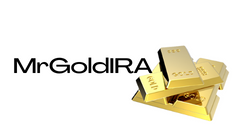You've probably used any kind of blockchain if ever purchased Bitcoin. Blockchain technology isn't just limited to cryptocurrency. Blockchains are being used by a variety of companies to enhance the security of their operations and to improve their operations. Blockchain technology allows for an efficient and secure tracking of data and transactions. You need to understand the functions of blockchain technology if you want to understand the impact it has on the global economy.
Blockchain explained
The blockchain is a concept that you most likely have come across if you are looking for ways to buy cryptocurrency. Blockchain records all transactions on a ledger.
Here are the steps to make transactions: First, a transaction must be included in a block. The nodes validate the block. Once the block has been verified, it's added to the blockchain. The update is then broadcasted to the peer-to-peer network. An item's entire story can be revealed by looking at its transactions in the past. As new transactions occur, a new block will be added.
The accessibility of a blockchain depends on its configuration. It can be accessible to everyone or only certain users.
Bitcoin is an example of a public network that anyone can join. To keep their data secure, a business could use a private blockchain network.
Who invented the blockchain?
Scott Stornetta, W. and Stuart Haber introduced the concept of blockchain in 1991. They also discussed the benefits of having a “chain of timestamps” for verifying digital document authenticity. From 1991 to 2008, people developed new ideas about the blockchain, drawing on the work of others. Nick Szabo was the first to coin the term “smart contracts” in the 1990s.
Satoshi Nakamoto, one or more developers who used the pseudonym Satoshi Nakamoto wrote a white paper that laid out the blueprint for the current blockchain technology. Nakamoto's Bitcoin whitepaper cites Haber's and Stornetta’s work and addresses several problems that prevented blockchain theory becoming a reality.
Nakamoto achieved the vision laid out in the Bitcoin whitepaper by creating the first Bitcoin blockchain in 2009. Blockchain 2.0 was created in 2014. It allows for other uses of blockchain technology, including smart contracts. Ethereum, a blockchain which allows smart contracts, was launched in 2015.
How can blockchain be used?
Although blockchain is often associated with cryptocurrency like Bitcoin, it can also be used for other purposes. Many industries can use this technology to keep track of data in an efficient manner. These are some examples of blockchain applications.
Cryptocurrency
Digital currency is the most well-known application of blockchain technology. Blockchain technology isn't just used by Bitcoin. Ethereum and Litecoin, two other cryptocurrencies that use blockchain technology, are also available.
Blockchain would not be possible without a central authority. Transactions in the financial industry are usually approved by a middleman such as a bank or credit-card issuer. The network of computers verifying cryptocurrency transactions is what approves or controls them.
Financial services
It is not surprising that blockchain technology can be used in financial services. Financial service companies can now use blockchain technology to track financial responsibilities, such as bank guarantees or letters of credit.
The blockchain records everything that is done. It can't be altered. This makes it useful for verifying compliance. Blockchain technology allows for faster transfers between financial institutions.
This document can be used to create contracts, such as for leasing or selling real property. Blockchain technology makes it easier to execute contracts efficiently and keeps a record of all transactions.
Healthcare
Blockchain can be used in many ways in the healthcare industry. Different organizations can use the blockchain to verify and cross-check information. It could be used by insurance companies to verify patient information, rather than waiting for records from healthcare providers.
Blockchain technology allows for the tracking of medical supplies and medications throughout the supply chain, from production to the end users. This is useful in the event that a recall or authenticity check needs to be done.
Voting
Blockchain technology could theoretically allow for voting. Individuals could receive private keys to vote. To verify that your vote was correctly counted, you can inspect the blockchain after voting.
Despite the popularity of blockchain voting, MIT and Harvard have found flaws in it. Voting would become impossible if voters lost their private keys. Anyone can access the private keys of another person to vote for them.
Automotive industry
Blockchain technology could also be beneficial to the automotive industry. Blockchain technology could securely share information about vehicles with manufacturers and third-party owners. To offer better auto insurance rates, auto insurers could make use of the information stored on blockchain. These rates could be calculated using data from your vehicle. Manufacturers could use this technology to track parts that go into vehicles and alert owners of defective parts. This would make it easier to recall defective parts and improve customer satisfaction.
Supply-chain management
The COVID-19 epidemic has shown the challenges associated with managing a supply-chain. Blockchain technology can be used for creating an indestructible record that can be shared with multiple parties throughout the supply chain. Walmart Canada, for example, uses blockchain technology to manage its invoices with 70 third-party freight carriers. IBM developed a blockchain-based system called IBM Food Trust that is intended to improve food supply chains.
What are blockchain's benefits?
Let's look at Company ABC as an example to help us answer this question. Company ABC is a legacy network of business that stores its data in many formats and places. To be successful, the company must validate its transactions with external partners.
Customers believe that blockchain technology will transform their expectations of companies in the next five-years.
– Salesforce, State Of The Connected Customer 2018, 2018
Joe Black, Chief Information Officer of the company, discovered problems with data reliability and accuracy. These inefficiencies can lead to delays and fees, which adds costs. This situation creates unnecessary and tedious paperwork that adds to the workload of business teams. It was difficult and time-consuming to reconcile data between ABC and external partners. Joe is concerned about the potential for fraud and criminal activity.
Joe decides that the company should be converted to a shared ledger or blockchain-based database to resolve these problems. This brings together data from all of the company's databases and parallel systems, as well as data from its partners. All parties can now have one interoperable, integrated source of truth. Every stakeholder now has easy access and control over all data and information relating to any business process.
Joe and his coworkers also start to see the following benefits:
- Securer. Blockchain networks offer more robust security because they are protected using cutting-edge methods such as cryptographic keys.
- Transactions are faster and more affordable. Blockchain databases don't require traditional third parties like banks or lawyers to authenticate transactions. The technology does that. Businesses can reduce costs and streamline processes by eliminating intermediaries.
- Transparency and traceability are enhanced. Every network member has access to all transactions and their history. This gives them real-time transaction-level security. These systems are also easier to audit.
“The greater the risk of something going wrong, the more complex and large-scale the data environment.” Amber Baldet is the CEO and cofounder of Clovyr, a decentralized application development startup. She stated that the more data lakes or silos we create, the higher the technical risk. There is a greater chance that something will go wrong if the data environment becomes more complex. It is essential that every industry can break down data into its components.
All parties have access to a single source of truth, which is interoperable and integrated. Every stakeholder in the business now has instant access data and information about any particular business process.
It is sometimes difficult to realize these benefits in practice. A distributed ledger or blockchain can be used to link different data stores. This can be very interesting. It can be challenging to realize these benefits in practice. It could be decentralized document signing within the organization or between your sub-legal entities. This would mean that you don't have to consult multiple lawyers and banks before starting a development project. This would simplify the process and make it easier and faster to start.
Scott Likens, PwC's technology leader, said that blockchain will be a key technology to preserve trust in the digital age. “It is extremely helpful to know everything is in order when dealings with other businesses. This includes being able to verify that all paperwork has been completed correctly, that products have been agreed upon, that payments are being made on schedule, and that the people involved are as they claim. Automating transactions with customers and partners will free you up to spend more time with them.
How will the blockchain disrupt industries?
These are some of the most popular uses for blockchain:
- Financial services. Blockchain is being used by many startups to disrupt established players. These applications aim to, for instance, reduce the number of intermediaries in existing transaction processes such as stock exchanges and cross-border payments networks.
Their goal is to lower complexity and costs. According to Sandra Ro, CEO of the Global Blockchain Business Council, they are focusing their efforts on developing blockchain solutions that can counter fraud and protect data integrity. Banks and other financial institutions have been shocked by the results of this event. We are seeing companies invest in blockchain technology as they try to understand these advances and the potential consequences. This company is creating teams to understand the potential consequences of blockchain technology and investing in other companies to create common initiatives.
- Healthcare. Healthcare.
Companies are seeking to develop blockchain-based healthcare apps that provide anonymized data pools for research companies, and new methods to detect counterfeit drugs.
- Food. Blockchain-based solutions are being explored by some organizations that can bring together different industries using completely new business models. IBM has, for instance, partnered with Walmart to create a blockchain-based food safety program that connects growers, processors and distributors.
This project is a collaboration between several companies. The goal of the project is to create a permanent record of all food-system data that will make it easier and faster to trace produce from farm, to store. This system will facilitate investigations into contaminated foods and allow Walmart and its partners to easily identify the origin of the food and the conditions in which it was made. A transparent and accountable ecosystem can build consumer trust.
Conn stated that Salesforce anticipates more companies to use blockchain technology to create a shared data model that can increase value for customers. In the near future, I believe we will see many different companies from different industries working together with the customer first.
Prime Tech Partners President Shira Rubinoff
Shira Rubinoff is a cybersecurity and Blockchain advisor. She says that if companies concentrate on specific use cases that are relevant for their business and position in the market they will be able to decide whether investing in blockchain technology makes sense. To be successful, companies must have a clear understanding about the problem they are trying solve.
The post Blockchain: What is it? Super Blog: What is Blockchain? And Why Does It Matter?
Frequently Asked Questions
What about other Self-Directed investment options?
The answer is yes! The answer is yes!
You can also diversify your portfolio into other crypto assets. For example, you could invest in both Bitcoin and Ethereum. Or maybe you would like to invest in a basket of multiple cryptos.
This is completely up to you and how you feel comfortable managing your portfolio.
What is the income limit for Roth IRA?
You may contribute $5500 per year ($50000 if you are 50 or older) into an individual retirement account (IRA). You should consider contributing more funds to a Traditional IRA if you have more than $100000. It allows your money to grow without tax until you decide to withdraw it at age 59.5 1/2. This is great for when you retire, but it also makes it very practical to save money for college.
What tax is imposed on cryptocurrency gains?
The IRS regards cryptocurrencies as property. If you earn any amount from selling crypto, the sale must be reported on Form8949, Sale of Business Property Schedule D (Capital gains). In the event of a loss, an amended return may be required.
You could deduct any capital loss you suffered as a result of buying crypto at less $600 per token. However, if crypto is sold for more than $600 per token after you claim a capital loss you cannot retake that deduction.
Profits from crypto trading are exempted from tax. These profits must be declared when you file your federal income taxes returns.
All digital currency is considered property by IRS. Any gains made from selling coins or tokens must also be reported on form 9499.
Cryptocurrencies, like property, are subject to capital losses and gains. If you sell a bitcoin worth $100,000, you will have to pay capital gains taxes on that amount.
Every profit that you make trading crypto is considered regular income. This includes all fees that you may charge to buy or sell coins.
If you are in a net loss position, you can claim a capital gain on your tax return. Capital gains can be offset by capital losses according to the IRS.
Let's say, for example that you bought 10 Bitcoins for $5,000 and they were sold for $60,000. Your total profit will be $55,000
Capital loss equals your short position multiplied times the number of outstanding shares. It would be $50,000, or $55,000 to $5,000 50,000 in this case.
Your capital loss can reduce your taxable income. Maximum capital loss that you can carry forward in a given year is $3,000.
You cannot deduct capital losses against capital gains.
Income tax rates vary depending on your income level. For incomes greater than $200,000. the highest marginal rate is 37%
For incomes below $37k650, the rate is 10%
If you do not report crypto sales on your tax returns, you could face interest and penalties.
How long will it take to get started trading after my Directed IRA account has been funded?
You will be able access to all of the markets within 24 hours after funding your account.
We are always available to answer your questions about Directed IRA Trading.
Can I cash my Roth IRA?
You should also check the laws of your state on the subject. If you want to withdraw money directly from an IRA but not pay income tax, you may need wait until you're 59 1/2 years.
Additionally, it is important that you do not withdraw more than the amount you have contributed. The IRS considers these excess contributions taxable income for the year they were made. This includes earnings and distributions.
If you plan to take money out of an IRA before age 59 1/2, you must pay ordinary income taxes on all amounts taken out of the account. These taxes include Medicare and Social Security taxes, as well as federal income tax. If you don’t pay these taxes, penalties or taxes back could be due.
A 10% penalty will apply if you decide to cash in your Roth IRA earlier than you have been paid if you are laid off from your job. This penalty is not refundable if your IRA is withdrawn before the age of 59 1/2.
How much are Bitcoin IRA fees?
Until you reach $10,000, the annual fee to invest in bitcoin via an IRA is 0%. After that, the flat monthly fee is 1%. This is due IRS regulations on tax-free investing.
Annually, the maximum amount you can deposit into an IRA for is $5,000. If you would like to invest more than $5,500 annually, you must first withdraw the funds from your traditional IRA. Then you can deposit the funds back into your IRA.
Statistics
- The Crypto IRA fees consist of an Annual Account Fee charged by Directed IRA of $295, a 0.50% (50 basis points) per trade fee, and a one-time new account establishment fee of $50. (directedira.com)
- For example, if you purchased a cryptocurrency for $1,000, its price could fall more than 75% over a few months and never recover. (investopedia.com)
- Gemini offers optional segregated cold storage for a fee of 0.40% (40 basis points) annualized, charged monthly, and deducted from the respective digital assets held in your account. (directedira.com)
- Up to 0.20% (20 basis points) is Gemini's special discounted ActiveTrader™ fee schedule. (directedira.com)
- Your Gemini trading fees will be much higher (up to and above 1.5%) if you use the Gemini Mobile app or the Basic Gemini trade interface. (directedira.com)
External Links
bitcoinira.com
coinbase.com
bloomberg.com
nerdwallet.com
investopedia.com
How To
Bitcoin Investing Using Your Self Managed IRA
Self-directed individual retirement funds (IRAs), are the best method to invest in bitcoin. This allows you to take greater control of how your money is used.
Bitcoin is a peer to peer virtual currency that is created by someone mining data blocks. When a block of data is mined, there are two groups that get rewarded: transaction validateators and miners. Miners receive bitcoins for confirming transactions, while validators are paid to keep the blockchain secure.
To mine, there is a lot of computing power required. Mining requires special equipment, software, as well as electricity. Users can verify authenticity of incoming payment transactions and help to validate transactions in mining.
Since these services can be provided at no cost, however, participation is subject to fluctuation. At its peak, approximately 13,000,000 shares of hashing energy were dedicated to verifying transactions in January 2017. The total network hash rate was estimated at between 10-20 petahash per second as of April 2018. The average cost to generate a single Bitcoin is between $3,000 and $6,000. However, because of fluctuating supply, bitcoin's prices tend to fluctuate greatly.
This makes bitcoin investments risky. One example is that a miner may lose access and become unable to verify transactions for a prolonged period. If the network gets overloaded, the confirmation rate can slow to a crawl. Similarly, if hackers compromise the system's integrity, they could corrupt the entire ledger of verified transactions. A block cannot be repaired once it is corrupted. All transactions from the past are invalid.
If investors are looking to invest in bitcoin, they might consider buying shares of miners. Shares can be a convenient way to get a piece in the industry without having to buy cryptocurrency.

















